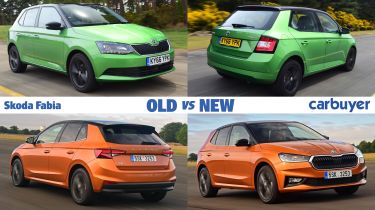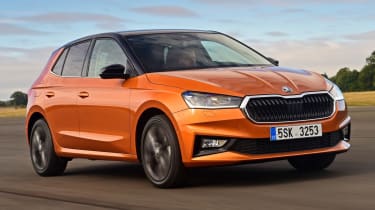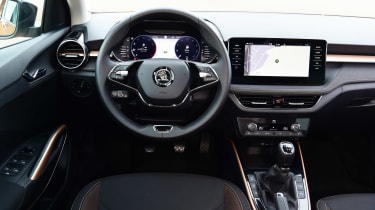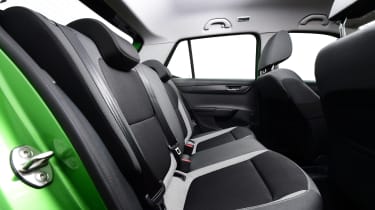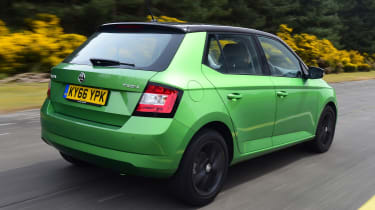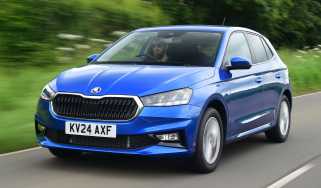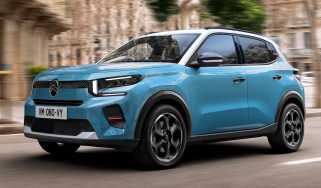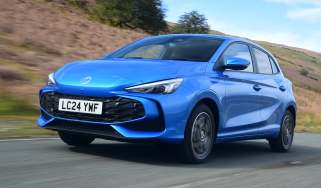Skoda Fabia: old vs new
The Skoda Fabia has always been a practical, good-value supermini - does the new one improve on its predecessor?
The Skoda Fabia was one of the first cars to change the perception of Skoda. It turned the Czech brand from the butt of jokes to a company that you’d happily buy a car from. That was helped by the Fabia sharing many parts with the Volkswagen Polo, which it still does today.
 The best small cars and superminis in 2025
The best small cars and superminis in 2025
Despite the parts-sharing, the Fabia has always cost less than the Polo. It’s no longer the cheapest supermini on the block - that’s the Dacia Sandero - but the Fabia still trades on value for money. It’s practical, well-equipped and economical but undercuts rivals like the Ford Fiesta and Vauxhall Corsa.
Other alternatives include the Suzuki Swift, Hyundai i20, Kia Rio and Nissan Micra. A new version of the Fabia was launched in 2021 and in this comparison, we’ll see whether you should choose the brand-new one or buy a lightly used previous-generation Skoda Fabia.
Visually, the two cars are quite similar, with the new model looking slightly smarter. Both are available with a fashionable contrasting roof, while the new version has LED headlights in place of traditional halogen bulbs.
Interior
The previous-generation Skoda Fabia still feels fairly modern inside. A lot of the technology and equipment fitted to more expensive cars is available, although the materials used aren’t the most luxurious. That’s part of the reason why the Fabia was cheaper than its rivals and the sturdy materials should at least stand up to years of use. Bear in mind that the entry-level S spec doesn’t get air conditioning as standard but does at least feature Bluetooth phone connectivity and DAB radio. Higher-spec cars get parking sensors, sat nav and keyless entry.
Tech-wise, the new Fabia has taken a leap forward. There’s the option of a digital instrument cluster and a big 9.2-inch touchscreen, both of which look sharp but do push the price of the car up. All cars now get air conditioning and LED lighting; wireless phone charging and a panoramic sunroof are new options.
Again, materials have been kept fairly simple but a two-spoke steering wheel and fabric dashboard inserts add visual interest. The new Fabia is more refined than the car it replaces, which will make long journeys more comfortable.
Practicality and boot size
Skoda trades on practicality these days and even the Fabia - now its smallest model - has some tricks up its sleeve. The 330-litre boot of the now-replaced Fabia is still bigger than most brand-new superminis, including the Fiesta. It’s five-door only and the rear doors open nice and wide, so getting in and out is easy. Once you’re in, it’s pretty spacious in the rear seats, and two six-footers will be able to sit behind each other. The Fabia even got some of Skoda’s Simply Clever touches, including an ice scraper in the fuel filler cap and, on most models, an umbrella stashed out of sight.
The new Skoda Fabia has grown significantly, to the point where you might question why you’d pay extra for a car like a Volkswagen Golf or SEAT Leon - or even the Skoda Scala. Its 380-litre boot is identical to the Golf and Leon, and is even the same size as the load space in the Suzuki Vitara SUV. Space is unsurprisingly good in the rear seats too, while there are a few more practical touches like the option of a USB port in the rear-view mirror housing to plug a dashcam into.
It’s worth noting that the old Fabia is still available as a roomy estate version, with a huge 530-litre boot that’s even bigger than what you get in the expensive BMW 3 Series Touring estate. Rumours suggest the new Fabia won’t be available as an estate this time around, unfortunately.
Engines and economy
Originally available with a diesel engine, the Skoda Fabia has been petrol-power only for the last couple of years. The diesel engine is unnecessary given the petrols return over 50mpg. All are 1.0-litre units but pay attention to whether a particular example is badged ‘MPI’ or ‘TSI’. The MPI engines are the least powerful and quite slow but do offer very cheap insurance and will be fine if you only drive around town; TSI engines are turbocharged and will be more adept at longer and faster journeys. An automatic gearbox becomes an option on the TSI engines too.
Those engines were retained for the new Fabia, so performance and economy figures are near-identical. However, there will also be a range-topping 1.5-litre petrol engine later on, with 148bhp and an automatic gearbox; expect it to be relatively expensive. A new platform underpins this Fabia and makes the newer car feel more stable and composed.
Verdict
The new Fabia offers everything you’d expect compared to the model it replaces: smarter styling, a fresh interior and a bigger boot. But a lot of things are the same as before, and you may decide that the boot and interior of the outgoing model are good enough.
A used Skoda Fabia offers excellent value; on BuyaCar, we found a one-year-old top-spec Fabia with under 8,000 miles for considerably less than a new base-spec model. Given that the Fabia tends to be a purchase made by the head rather than the heart, it seems sensible to pay less for a nearly new Fabia - unless the finance deals are better on a brand-new model, of course.
Read our guides to the best first cars and best cheap-to-run cars, or check out used Skoda Fabia deals on BuyaCar.
Recommended
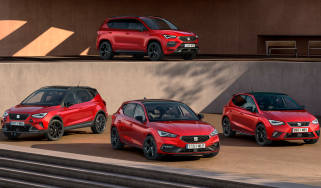
SEAT releases new Black Edition models with sportier styling
Most Popular
Tips & advice

Car dashboard warning lights: what does each symbol mean?

Electric car charging stations: public networks, charger types, apps and maps


